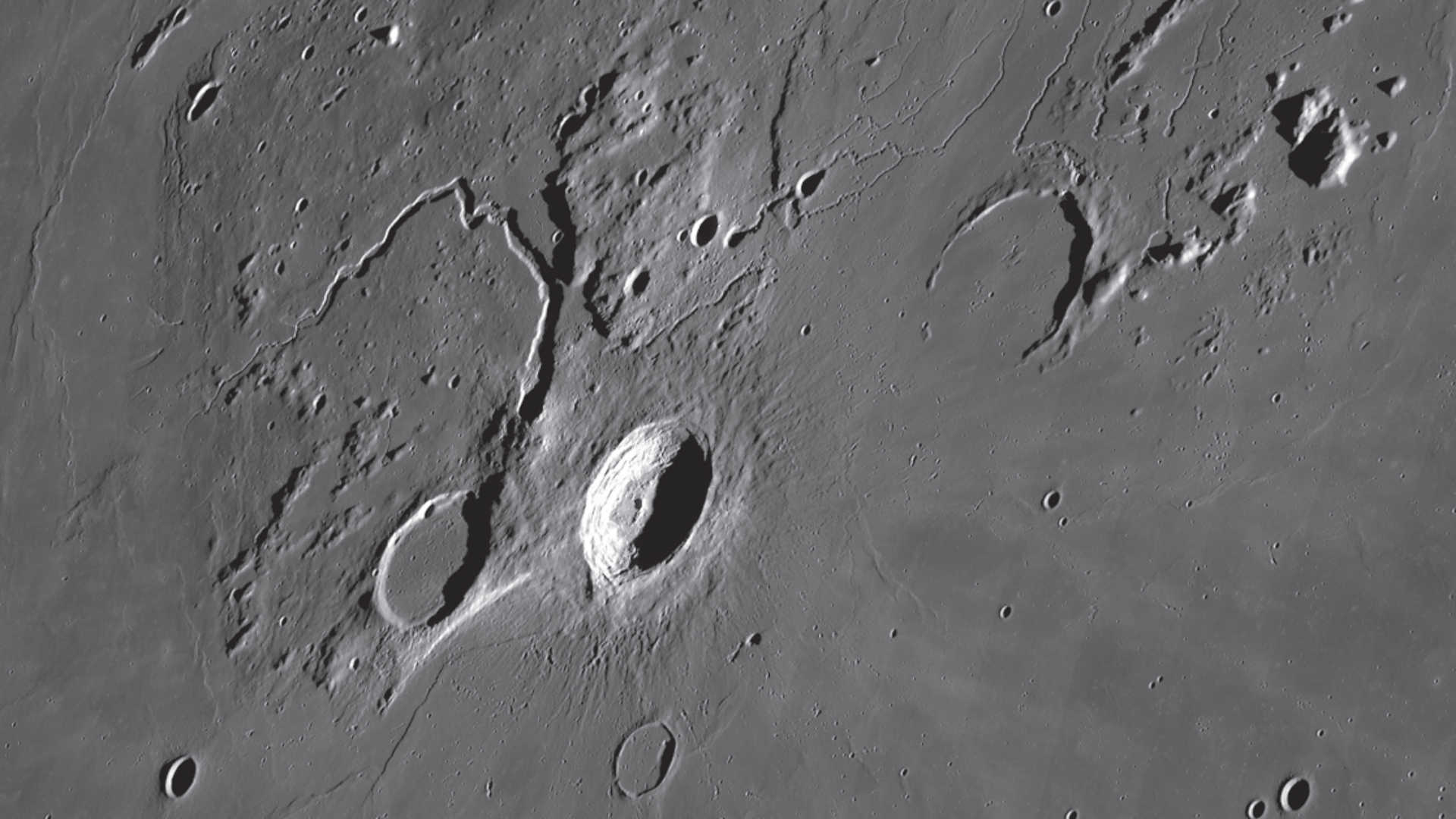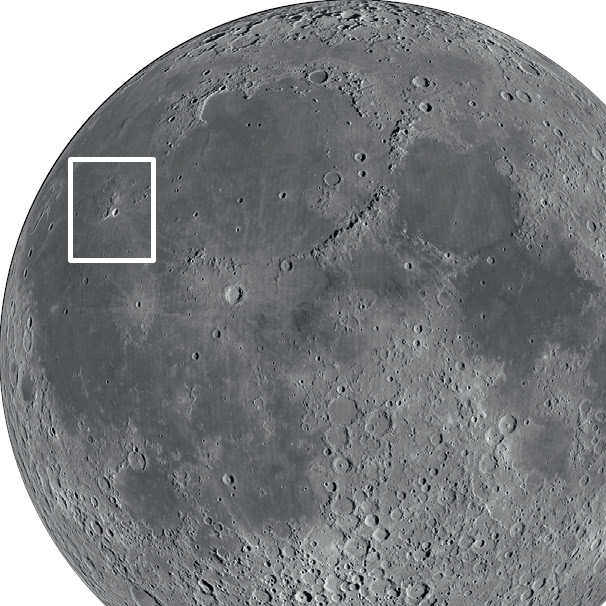Highlights in a stormy sea
Two prominent landmarks can be observed on the western edge of the Moon, 11 days after new Moon.
 The material inside crater Aristarchus is the brightest on the near side of the Moon. NASA/GSFC/Arizona State University
The material inside crater Aristarchus is the brightest on the near side of the Moon. NASA/GSFC/Arizona State University You will find bright crater Aristarchus close to the western edge of the Moon. NASA/GSFC/Arizona State University
You will find bright crater Aristarchus close to the western edge of the Moon. NASA/GSFC/Arizona State UniversityLocated in the middle of the Oceanus Procellarum (Ocean of Storms), there is a type of plateau. Here you will find two prominent lunar landmarks, which lie on the terminator on the 11th day after New Moon and are best observed around this time: the 46 km wide crater Aristarchus and the adjacent Vallis Schröteri (Schröter’s Valley).
Light and dark stripes
 Drawing of Aristarchus: the walls are patterned with a series of dark stripes and bright surfaces. Lambert Spix
Drawing of Aristarchus: the walls are patterned with a series of dark stripes and bright surfaces. Lambert SpixThrough a telescope, Aristarchus appears sharply delineated as if it were punched out of the lunar landscape. The inner slopes of the walls are especially interesting, because they are patterned with a series of dark stripes and bright surfaces. If the seeing is good, it’s worthwhile taking a closer look with higher magnification. The crater’s very good condition indicates that it is relatively young, which on the basis of current data is estimated to be just 200 million years.
A mysterious lunar phenomenon
Two special features define Aristarchus’ character. The material inside the crater is the brightest rock on the near side of the Moon, and Aristarchus is the region with the highest number of observed so-called transient lunar phenomena. These are infrequent, temporary, brightening, darkening or changes in colour that are observed in certain regions of the Moon's surface and for which there is no reliable explanation. Aristarchus has a bright ray system which extends up to 150 km, mainly in the south-east direction. Due to the uneven distribution of ejecta, it is assumed that the impactor struck the surface of the Moon at an oblique angle. The central peak, which is slightly offset from the centre, would also appear to confirm this theory.
Snakes on the Moon
At 185 km long, Vallis Schröteri or Schröter’s Valley is the longest sinuous rille on the Moon. These formations resemble terrestrial rivers. In fact, subterranean lava flowed through these channels, and the ceiling of the tunnels later collapsed. The source of the lava flow that created Vallis Schröteri lies northeast of the 35 km wide crater Herodotus. Here you will find a depression followed by a bulging of the rille with the rather appropriate nickname Cobra’s Head. The small crater-like valley opening was probably caused by a gaseous volcanic eruption. Vallis Schröteri makes a 180° turn to the south-west and ends at the edge of the Aristarchus plateau at a 1,000 m high precipice. Here the rille, which is up to 10 km wide in some sections, is only around 500 m wide.
Best visibility 11 or 24 days after New Moon
Author: Lambert Spix / Licence: Oculum-Verlag GmbH
